
Daiamami Genki is a Japanese professional sumo wrestler from Tatsugō, Kagoshima. After a successful amateur career, he turned professional in January 2016, making the top makuuchi division in November of the following year. His highest rank has been maegashira 11. He wrestles for Oitekaze stable.

Tomokaze Sōdai, born December 2, 1994, as Yūta Minami is a Japanese professional sumo wrestler from Kawasaki, Kanagawa. He debuted in sumo wrestling in May 2017 and made his makuuchi debut in March 2019. His highest rank has been maegashira 3. Originally a member of Oguruma stable, he moved to Nishonoseki stable in 2022. In June 2024 he moved to the newly-established Nakamura stable. He has one special prize and two kinboshi for defeating a yokozuna.

Kotozakura Masakatsu, born 19 November 1997 as Masakatsu Kamatani, is a Japanese professional sumo wrestler from Chiba Prefecture. He wrestles for Sadogatake stable, a sumo stable previously run by his grandfather, former yokozuna Kotozakura, and currently run by his father, former sekiwake Kotonowaka. He made his debut in November 2015 and reached the top makuuchi division in March 2020, reaching the san'yaku ranks in January 2023. His highest rank has been ōzeki. He has won one championship in the top division and five special prizes for Fighting Spirit, as well as one Technique prize.

Kirishima Tetsuo, born April 24, 1996, as Byambachuluun Lkhagvasuren is a professional sumo wrestler from Mongolia. He made his debut in March 2015 representing Michinoku stable under the name Kiribayama Tetsuo (霧馬山鐵雄), and reached the top makuuchi division in January 2020. He wrestles for Otowayama stable, where he moved to in April 2024 following the closure of Michinoku stable. His highest rank has been ōzeki. He has won the makuuchi championship twice along with two runner-up performance and four special prizes in his career to date.
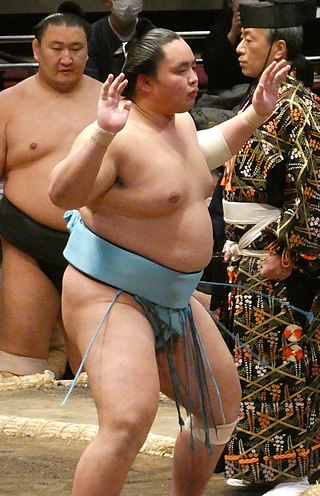
Kotoshōhō Yoshinari is a Japanese professional sumo wrestler from Kashiwa, Chiba. He made his debut in November 2017 and reached the top makuuchi division in May 2020. He wrestles for Sadogatake stable. His highest rank has been maegashira 3. He was runner-up in the January 2023 tournament, also winning the Fighting Spirit prize.

Tobizaru Masaya is a professional sumo wrestler from Japan and wrestles for Oitekaze stable. He made his top division debut in September 2020 and his san'yaku debut in November 2022. As of August 2023, Tobizaru is also the smallest makuuchi wrestler and the third smallest sekitori-ranked wrestler overall.

Ichiyamamoto Daiki is a Japanese professional sumo wrestler from Iwanai, Hokkaido. A former amateur wrestler at Chuo University, he made his professional debut in January 2017, reaching the top makuuchi division in July 2021. His highest rank has been maegashira 8. He wrestles for Hanaregoma stable.
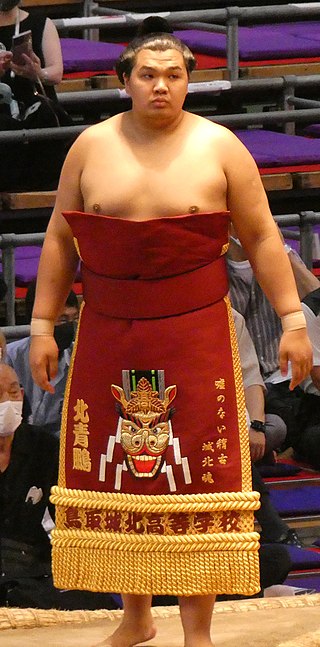
Hokuseihō Osamu (北青鵬 治, born 12 November 2001 as Ariunaagiin Davaaninj is a former sumo wrestler from the Miyagino stable. He was recruited by the former yokozuna Hakuhō, and had been regarded as his protégé. He made his professional debut in March 2020 and won his first 21 matches. His highest achieved rank was maegashira 6.
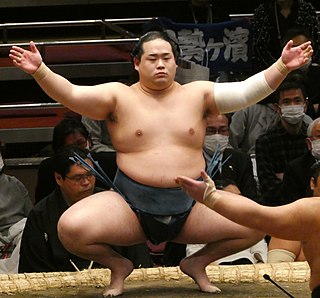
Nishikifuji Ryūsei, born 22 July 1996 as Ryūsei Ogasawara is a Japanese professional sumo wrestler from Towada. He wrestles for the Isegahama stable and made his debut in September 2016 and reached the top division in July 2022. His highest rank has been maegashira 3. With the exception of the sandanme division, Nishikifuji has won championships in each of the four lower divisions of professional sumo, as well as a jūryō championship. He also earned a special prize in his makuuchi debut in July 2022.

Hiradoumi Yūki is a Japanese professional sumo wrestler from Hirado. He wrestles for the Sakaigawa stable. His highest rank is komusubi.

Atamifuji Sakutarō, born 3 September 2002 as Sakutarō Takei is a Japanese professional sumo wrestler from Atami, Shizuoka Prefecture. He wrestles for the Isegahama stable and made his debut in November 2020. He won the championships in the two lowest divisions of jonokuchi and jonidan in early 2021. In November 2022 he was promoted to makuuchi, becoming one of the fastest in the history of professional sumo to reach the top division. His highest rank has been maegashira 1.
The following are the events in professional sumo during 2023.

Hakuōhō Tetsuya is a Japanese professional sumo wrestler from Kurayoshi, Tottori. After a successful amateur career, he turned professional in January 2023, via makushita tsukedashi system, winning that division's championship and being promoted to sumo's top division in July 2023. Nicknamed "Reiwa monster" thanks to his record-breaking promotions, his highest rank has been maegashira 9. A member of Miyagino stable, under the guidance of former yokozuna Hakuhō, he currently wrestles for Isegahama stable.

Ōshōma Degi born 9 April 1997 as Pürevsürengiin Delgerbayar is a Mongolian professional sumo wrestler from Töv Province. Wrestling for Naruto stable, he made his professional debut in November 2021, and became sekitori when he reached the jūryō division in July 2022.

Tamashōhō Manpei, born March 6, 1993, as Erdenebileg Enkhmanlai is a Mongolian professional sumo wrestler from Ulaanbaatar, Mongolia. Wrestling for Kataonami stable, his highest rank has been maegashira 16.
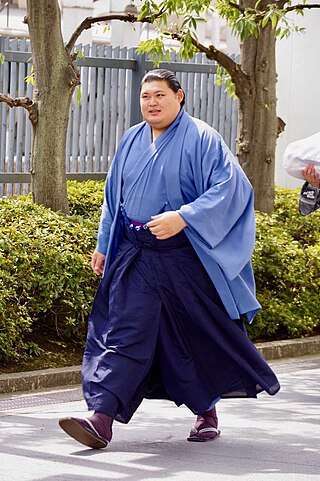
Ōnosato Daiki, born June 7, 2000, as Daiki Nakamura is a Japanese professional sumo wrestler from Tsubata, Ishikawa Prefecture. After a successful amateur career and defined as "the most eagerly awaited prospect to come out of collegiate sumo in decades", he joined Nishonoseki stable and began his professional career at the rank of makushita 10 via the makushita tsukedashi system. He reached the top makuuchi division in January 2024 after competing in just four tournaments, and in May of the same year won his first top-division championship in a record seven tournaments. He is currently ranked as ōzeki.
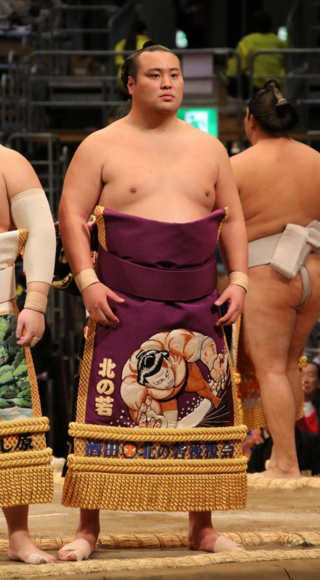
Kitanowaka Daisuke, born 12 November 2000 as Daisuke Saitō, is a Japanese professional sumo wrestler from Sakata, Yamagata Prefecture.

Shirokuma Yūta is a Japanese professional sumo wrestler from Sukagawa, Fukushima Prefecture. After a successful amateur career, he joined Nishonoseki stable and began his professional career in May 2022. His highest rank has been maegashira 16.
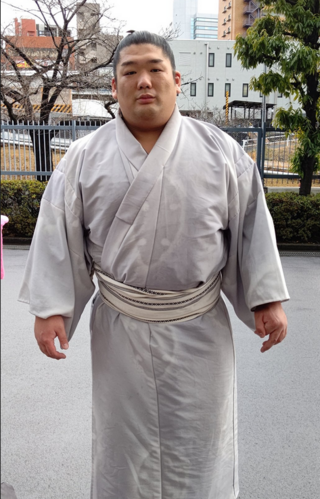
Takerufuji Mikiya, born April 9, 1999, as Mikiya Ishioka is a Japanese professional sumo wrestler from Kanagi, Aomori Prefecture. His highest rank is maegashira 6.

Tokihayate Hideki, born August 25, 1996, as Hideki Tomie is a Japanese professional sumo wrestler from Kurihara, Miyagi. His highest rank is maegashira 15.



















